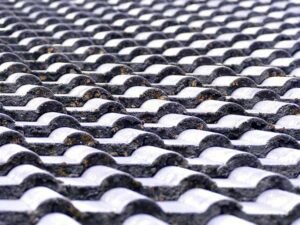Overhead doors are more than a convenience—they’ve become a fundamental feature in today’s buildings, shaping how people interact with their homes, businesses, and workspaces. Their vertical motion saves space, improves access, and allows for smoother traffic flow in garages, workshops, and warehouses. Beyond functionality, they contribute to a building’s appearance and overall efficiency. We will explore how overhead doors have adapted to different needs and uses, what makes them a reliable choice in diverse settings, and how their design supports security, ease of use, and lasting structural performance across various applications.
Ways overhead doors have adapted to different needs and uses
-
Residential Overhead Doors as a Design and Lifestyle Upgrade
In many residential settings, overhead doors are no longer considered practical barriers for garages. Instead, they are integrated into the broader design of the home, affecting aesthetics, convenience, and energy efficiency. A well-designed overhead door can complement architectural features, from modern builds with sleek finishes to traditional homes with wood-grain textures and carriage-style accents. For homeowners, the garage door often represents their home’s most significant moving part, which plays a key role in curb appeal. Materials such as insulated steel, composite overlays, or aluminum with glass inserts offer performance and personality.
Overhead doors can be automated for daily ease, programmed to work with smart home systems, or set to close automatically for security. Inside the garage, a properly functioning overhead door maintains interior temperature and keeps out weather elements, insects, and noise. This becomes particularly important in garages that double as workshops, gyms, or utility areas. Homeowners also innovatively use overhead-style doors inside the house, such as partitioning home offices or providing flexible access to backyard patios. Lifting and tucking away an entire wall opens possibilities for transforming rooms into multifunctional zones. Whether the priority is comfort, style, or usability, overhead doors bring a layer of adaptability to homes that few other fixtures can match.
-
Commercial and Industrial Use that Prioritizes Function and Safety
In commercial environments, overhead doors carry more than visual value—they support the core operations of a business. These doors must handle frequent use, large-scale movement of goods or vehicles, and often harsh environments, all while keeping the property secure. Warehouses, distribution centers, loading docks, and automotive service facilities all rely on overhead doors to move products and equipment efficiently. One of the most significant advantages is opening a wide, tall entry point without encroaching on valuable floor space. In busy industrial settings, that saved space and vertical movement allow trucks and forklifts to maneuver quickly and safely. Some overhead doors are equipped with high-speed motors to reduce downtime during operations, while others are insulated to help maintain consistent temperatures inside storage areas.
This is particularly useful in facilities handling temperature-sensitive materials or working in extreme weather zones. Safety sensors, reinforced tracks, and industrial-grade locking mechanisms are all part of the design to prevent damage and protect workers. Durability is a top concern, and overhead doors built for commercial use are typically made from heavy-duty steel or aluminum, often with rust-resistant finishes and tight seals. Depending on the facility’s needs, these doors can be customized with windows for visibility or ventilation slats for airflow. Their design isn’t static, either—manufacturers continually improve components to address modern challenges like energy consumption, automation, and increased security. The result is a product that works as hard as the business and holds up under constant demand.
-
Material Innovation and Technological Advancements in Overhead Doors
One of the reasons Halo overhead doors remain relevant in modern construction is the steady evolution of the materials and technology behind them. In the past, wood and bare steel were the primary choices, but today’s options include fiberglass, vinyl, aluminum, and composite materials that offer enhanced durability, lighter weight, and reduced maintenance. These material changes have made creating doors that match the climate and the building’s use more manageable. For example, coastal properties may opt for corrosion-resistant aluminum, while cold climates may prioritize heavily insulated steel doors to retain indoor heat. Technological improvements have made overhead doors more responsive and efficient.
Many come equipped with quiet motorized openers, rolling code security systems, battery backups, and solar-powered options. Smart connectivity is another layer of convenience that has emerged, with apps that allow users to monitor or operate their doors remotely. Sensors and cameras can now integrate with overhead doors to alert users if something is blocking the path or if the door has been left open. Even maintenance is getting smarter, with systems that alert homeowners or property managers when components are wearing down or need attention. These upgrades improve user experience and extend the door’s life by reducing wear and tear through smoother operation. By combining the toughness of modern materials with intuitive technology, overhead doors have transitioned from essential building components to intelligent, adaptable systems that match the pace of today’s needs.
-
Customization and Architectural Integration Across Property Types
No two buildings are the same, so overhead doors offer more custom options than ever before. Whether the goal is to blend into a sleek storefront or stand out as a design feature in a luxury home, there are configurations, finishes, and styles that can be tailored to meet that vision. In retail, overhead glass doors often create open-air transitions between indoor and outdoor spaces, making shops or cafés more inviting and flexible. These doors can be powder-coated in custom colors to match branding or built with clear, tinted, or frosted glass to control privacy and light.
In residential architecture, designers might choose frameless glass for a minimalist look or barn-door styling for rustic homes. Overhead doors are also used in recreational facilities, educational buildings, and creative studios—anywhere that benefits from flexible spatial design. This adaptability encourages architects and builders to include them in places where a standard door might not suffice. Because they can span large openings and disappear when open, overhead doors help redefine how spaces are used. Their ability to bridge indoors and outdoors, increase accessibility, and adapt to private and public settings makes them a design feature about much more than just opening and closing.
Overhead doors have earned their place in residential and commercial architecture through their practicality, reliability, and adaptability. They’ve grown from utilitarian building features into integral design elements influencing how people experience space, light, and movement. With the evolution of materials and technology, these doors offer functionality that matches modern expectations without sacrificing durability or style. As spaces change and demands increase, overhead doors remain a dependable solution that continues to open new possibilities in design and performance.










